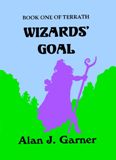
The topic under review happens to be: as an author do you favor realism over storytelling? Or put another way, do you let the truth get in the way of a good story?
Specifically what I’m referring to is scripting a fantasy fiction fight scene.
Swordplay often wasn’t the one-on-one duels immortalized by the likes of Zorro or The Princess Bride. Braveheart is a more faithful depiction of the free-for-all scrapping that dominated medieval warfare. When plunged into the frightening melee of battle, there was but one rule: strike or be struck down. (You thought it’d be “kill or be killed”, right? I opted not to be so clichéd.) Swordfighting is incredibly vigorous and tiring, meaning combatants sought to end any fight swiftly and decisively. There simply wasn’t the energy to waste on fancy flourishes with the blade. Forget Hollywood’s fashionable fight-to-the-death skewering of the baddie through the heart with your father’s sword in a climatic act of vengeance. Legs made a handier target than the (often armored) torso of an opponent. A favored technique was to slash the lower limbs, then simply step back and let your adversary bleed out – much like a shark attack. Also, the swordsman whose blade cleared the scabbard first stood the best chance of winning any life-and-death contest. Battle commenced with your sword already in hand, not drawing it challengingly to entice your foe into combat.
Therein lies the writer’s dilemma. Should the tale be historically factual to the detriment of the plot? Or does the story get spiced up with improbable swordfights which justifiably raise the tension of the scene tenfold.
My approach is thus. For the large scale battle scenes involving opposing armies thrashing it out on the field of battle, I find it’s best to stick with accuracy. Study texts on medieval warring. Pore over accounts of ancient battles. You’ll discover the army which occupied the high ground held the advantage; archers rained down suppressive fire (the longbow was roughly equivalent to today’s machine gun) which, in conjunction with heavy cavalry, broke up an infantry charge; side forays were led to attack the enemy baggage train and slaughter camp followers while the main soldiery clashed. Conduct your research and I guarantee you’ll come away with a boatload of authentic ways in which your kingdoms and empires can be pitted against one other militarily.
Individual duels give the writer some leeway. General swordfighting terms – parry, riposte, etc. – can be utilized to convey action to a reader (and sound both cool and knowledgeable to boot), yet you don’t need to be quite so literal with the facts. Building the scene to its satisfying climax is just as crucial as knowing when to thrust or block. How the hero despatches the villain, while important in terms of realism, it not as vital as the impetus driving Good to confront and ultimately triumph over Evil.
In the end it’s your call. When Garrich slew the brigand responsible for his foster father’s death in Wizards’ Goal, first volume in my Terrath series, I embellished fact with storytelling to achieve the desired result. Whatever you choose to be - realistic or dramatic – just ensure the portrayal does justice to your story. After all, it’s not called fantasy for nothing.

 RSS Feed
RSS Feed
